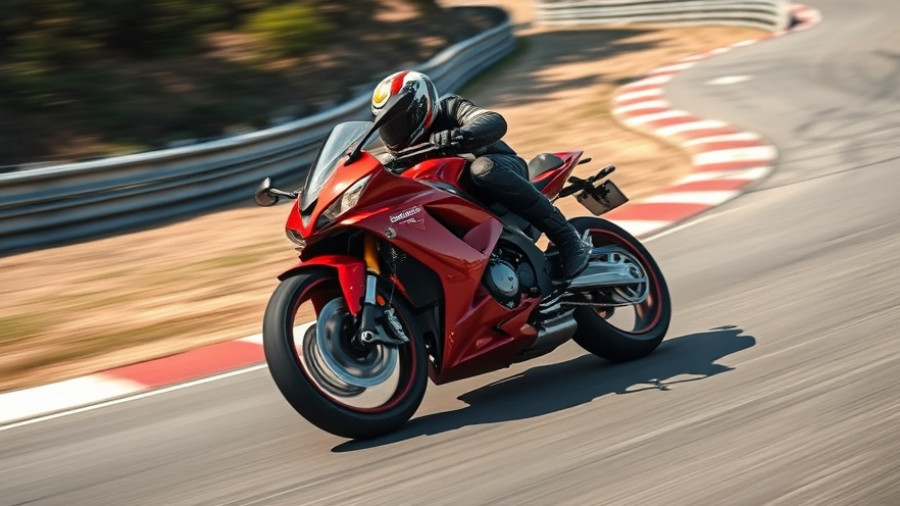
Rivian Takes Bold Steps in the EV Market
Rivian, the ambitious electric vehicle (EV) manufacturer, has recently made headlines by starting construction on its groundbreaking $5 billion assembly plant located east of Atlanta, Georgia. This development comes after extensive planning and a temporary pause aimed at conserving cash, allowing Rivian to further its vision in a competitive automotive landscape.
This move marks a significant pivot in Rivian's strategy amid looming challenges. With federal EV tax credits scheduled to wrap up after September 30, 2025, and rising tariffs increasing manufacturing costs, Rivian is betting on its ability to deliver superior products without relying solely on incentives. By focusing on innovative pricing and quality, the company hopes to win over consumers as the demand for EVs takes a nuanced direction.
Georgia's Role in Rivian's Growth
The incentives provided by Georgia, amounting to roughly $1.5 billion, underscore the state’s commitment to becoming a hub for electric mobility innovation. In exchange for these incentives, Rivian will create 7,500 jobs with an average annual salary of $56,000, thus playing a pivotal role in bolstering the local economy.
Moreover, the site is well-prepared, with the state having already invested in essential infrastructure improvements. This bet on Rivian also aligns with Georgia's larger ambition of fostering a robust electric vehicle ecosystem, supporting diverse elements like workforce training that will meet the labor demands of this burgeoning sector.
Expanding Production Capabilities
Rivian’s existing facility in Normal, Illinois, has been focused on producing its R1T pickup, R1S SUV, and commercial delivery vans. However, to further scale its operations, Rivian plans to introduce the R2 SUV, a smaller and more affordable model anticipated to attract more customers with a projected starting price around $45,000. Ideal for a market already saturated with competitors, this model could help Rivian secure a foothold in the growing market for more budget-friendly EV options.
The new Georgia plant aims to reach a production capacity of 200,000 vehicles annually by 2028, with potential plans that may double this output in subsequent years, depending on market demands and the acceptance of novel models like an even smaller R3. Wider production capabilities will allow Rivian to distribute fixed costs more efficiently, consequently lowering entry prices, thus making their vehicles more accessible.
Challenges and Industry Shift
Despite Rivian's strategic initiatives, the landscape of electric vehicle delivery has shifted. Sales growth has decelerated significantly in 2025 compared to previous years, prompting Rivian to adjust its expectations for vehicle deliveries, estimating an output of between 40,000 and 46,000 vehicles in 2025—a drop from the 52,000 delivered in the previous year. This adjustment also reflects a broader recalibration across the automotive industry as legacy automakers like Ford and Chevrolet ramp up competition in the premium pickup EV market.
This competition has intensified as traditional automotive giants continue to recalibrate their own EV strategies, now targeting mainstream buyers seeking affordability and practicality alongside sustainability. Rivian's unique niche of premium electric pickups and SUVs is thus under increased pressure, making it imperative for the company to stay innovative while managing costs effectively.
Neighbor Concerns and Environmental Considerations
As construction progresses, the voices of local residents rise in response to the environmental impacts of such a large-scale facility. Neighbors have expressed valid concerns regarding land use and water quality in the vicinity of the plant site. Although Rivian and state officials promote the project as a vital addition to Georgia's economic landscape and electric mobility infrastructure, expectations for ongoing discussions about environmental safeguards are certain.
To address these community concerns, Rivian must demonstrate a commitment to sustainable practices, ensuring their environmental stewardship aligns with local interests. Implementing eco-friendly practices during the construction phase, alongside promoting transparency and engagement with the community, will be essential for building trust as they move forward.
Final Thoughts: The Path Ahead for Rivian
Rivian's entry into Georgia represents not just a new plant, but a substantial stake in the evolving automotive landscape marked by electrification. The challenge will remain for Rivian to carve out its space amid fluctuating incentives and fierce competition. If they can ensure quality, maintain competitive pricing, and manage community relationships thoughtfully, they may well build a successful future in the competitive world of EVs.
 Add Row
Add Row  Add
Add 




Write A Comment